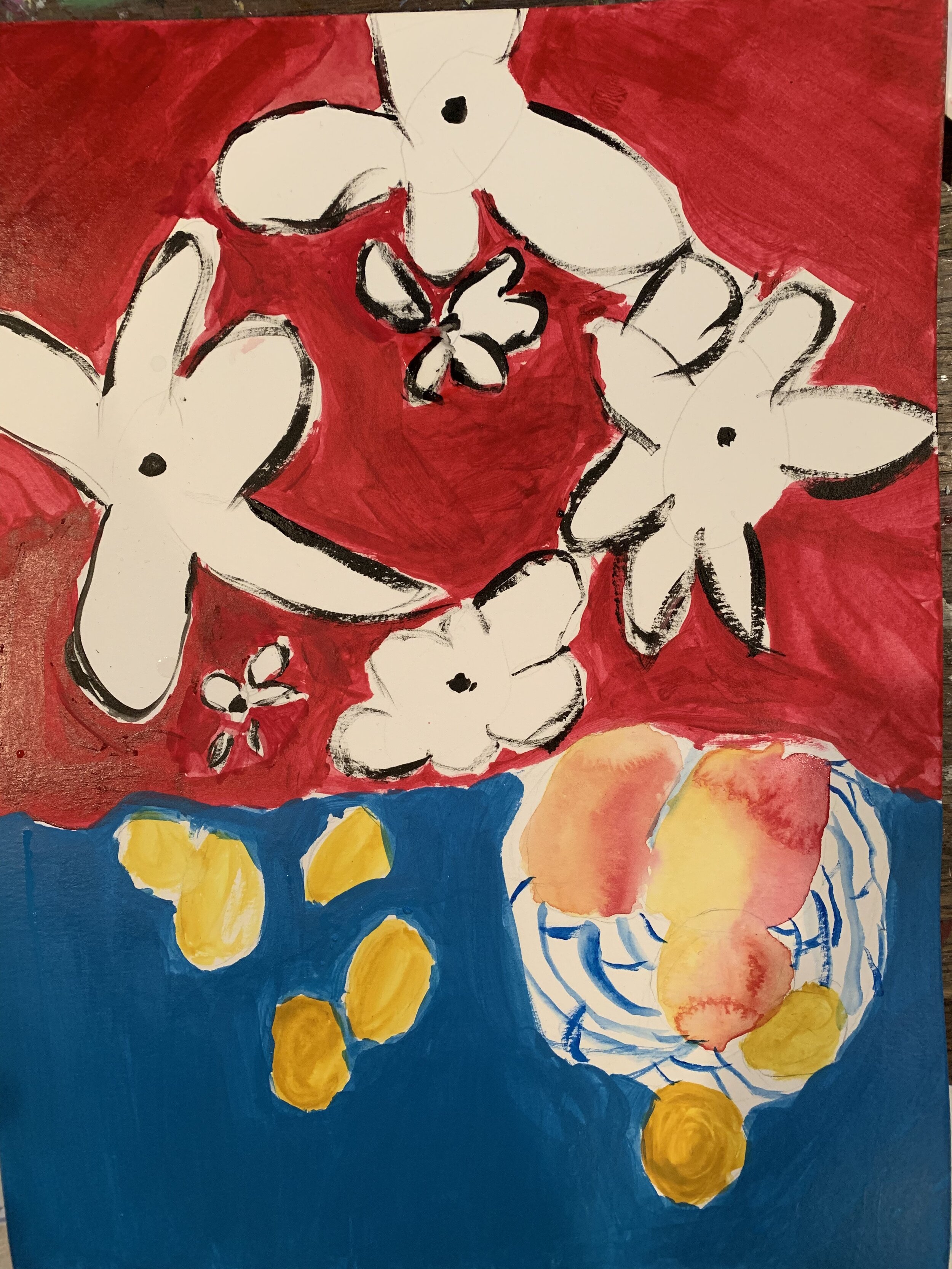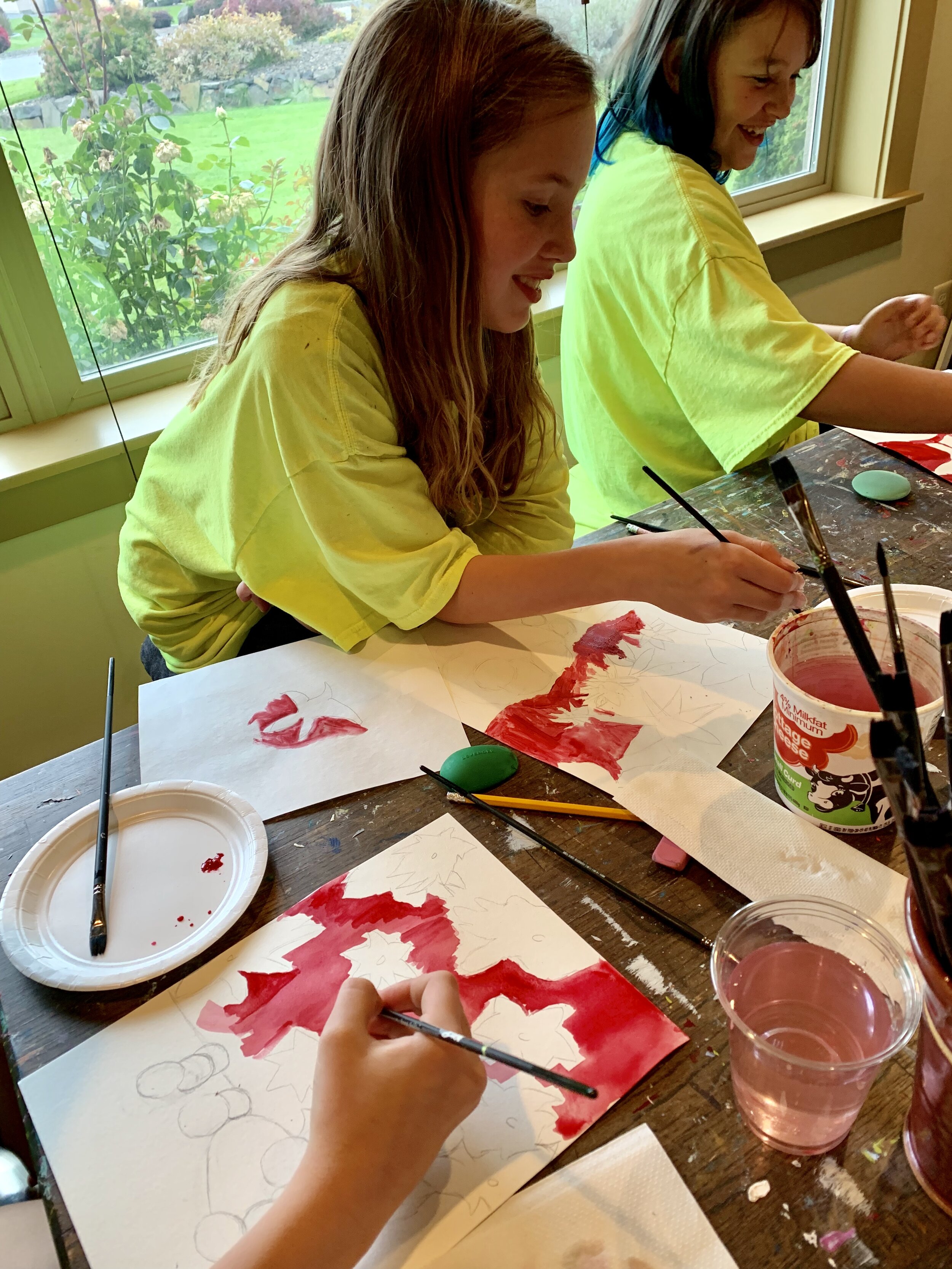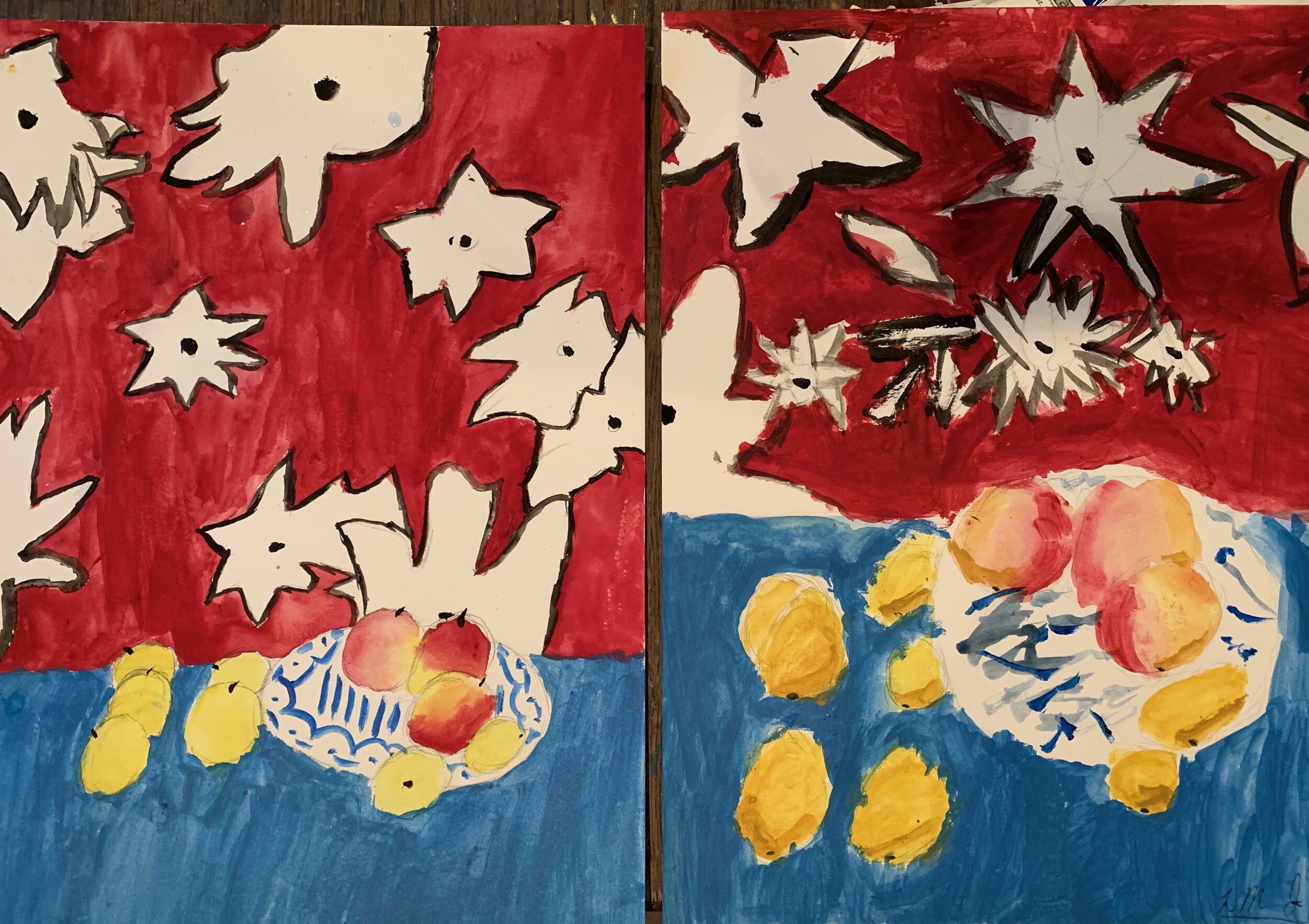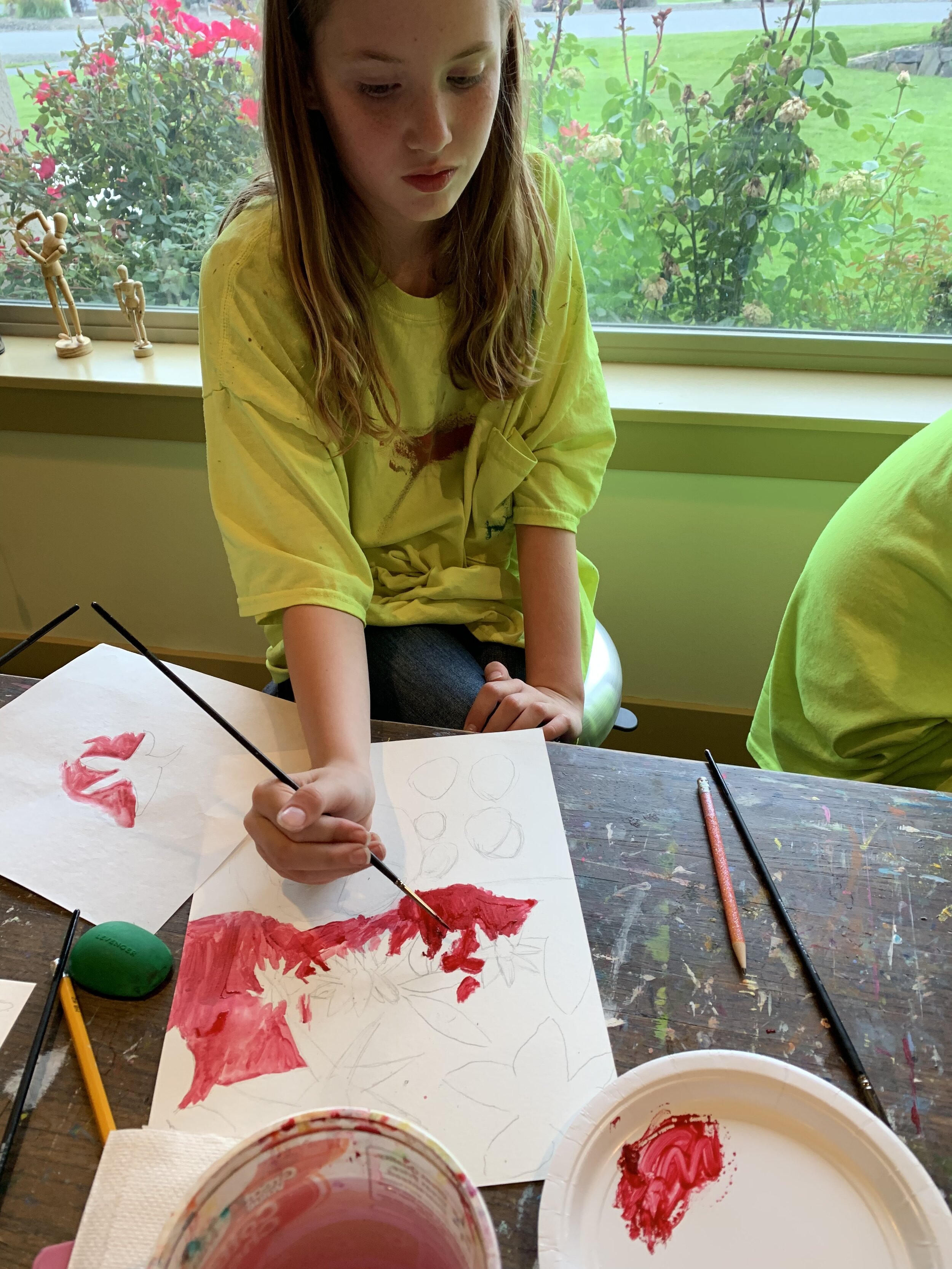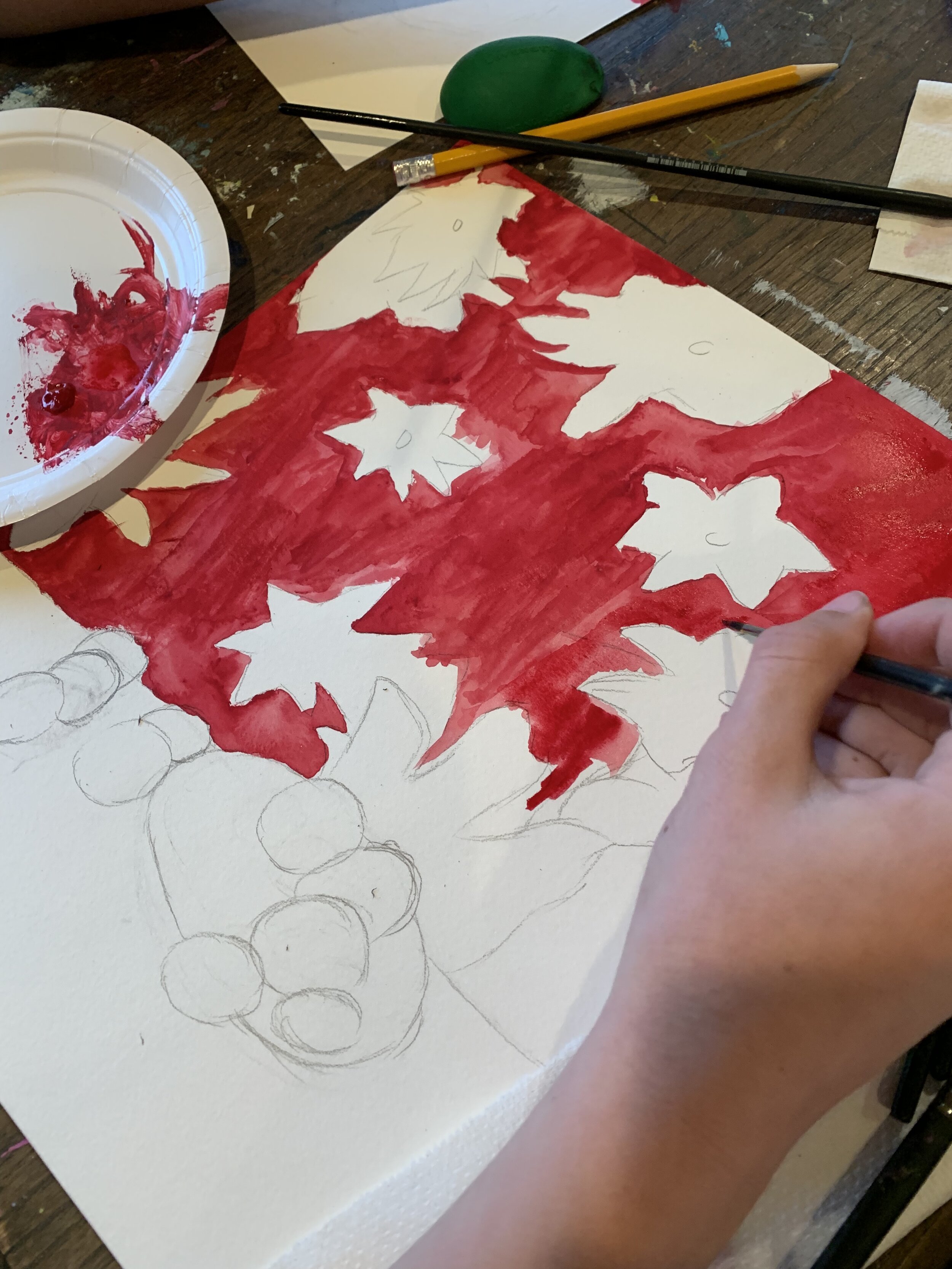The Tate Museum puts it very succinctly, defining the subject of a still life as "anything that does not move or is dead."
Henri Matisse is said to be one of the most influential French artists of the 20th century. Matisse’s use of straightforward color, inventive figuration, and decorative patterns helped redefine many of the formal tenets of painting. Because of Matisse’s straightforward color and form, he is an accesible artist for young artists.
The alla prima manner—that is to say, completed in one session, without any preliminary underpainting is very freeing. Working alla prima requires confidence, but it is very liberating—the idea is to work rapidly and intuitively, using the brush freely to express your instinctive response to your subject. Acrylic paints are ideally suited to this type of painting because they can be used thickly—straight from the tube—or diluted with water for wash-like effects. And because acrylics dry so quickly, you can apply one color over another within just a few minutes, without fear of disturbing the color beneath.
I set up a colorful still life in my studio for my students to paint. They chose either watercolor or acrylic paints but by the end of the class most had ended up with a mixed media painting. We used wet on wet technique in the apples and layering on the quince.
I was thrilled to see the completed pieces completely filling their paper.
I kept the turquoise washcloths but switched the fabrics and tried my hand at it. I had not painted with watercolor in years and it was very satisfying to use them again.

